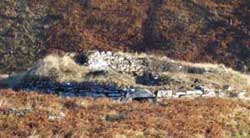 Around the middle of the first millennium BC impressive stone built towers, called brochs, were built. Caithness has more brochs than any other area of Scotland: there may be as many as 200. Only a few have been excavated in modern times, the majority excavated in the late 19th- and early 20th centuries. Brochs were thick-walled structures, often with inter-mural chambers and stairs leading to upper floors. Excavations have revealed traces in the floors of post-holes which could have supported an inner wooden structure including floors. Many brochs have associated outbuildings although it is often difficult to tell whether they are contemporary with the brochs or later.
Around the middle of the first millennium BC impressive stone built towers, called brochs, were built. Caithness has more brochs than any other area of Scotland: there may be as many as 200. Only a few have been excavated in modern times, the majority excavated in the late 19th- and early 20th centuries. Brochs were thick-walled structures, often with inter-mural chambers and stairs leading to upper floors. Excavations have revealed traces in the floors of post-holes which could have supported an inner wooden structure including floors. Many brochs have associated outbuildings although it is often difficult to tell whether they are contemporary with the brochs or later.
Around this time some hilltop enclosures and promontory forts may also have been built. Some hut circles may also date around this time.
These new ‘defensive’ brochs and forts may be associated with the rise in tribal kingdoms. The people who constructed these monuments were still farmers although they began to use iron.